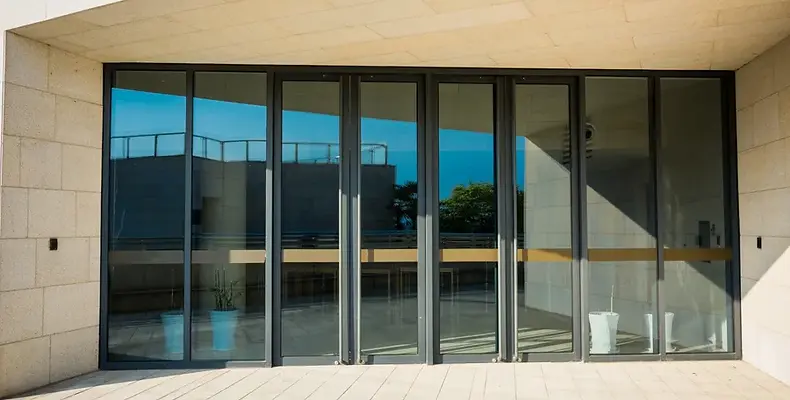
The Future of Facade Windows and Doors: Emerging Technologies and Innovations
Facade windows and doors are not just openings in a building; they are integral components that significantly impact aesthetics, energy efficiency, and occupant comfort. As technology advances, so too do the possibilities for these crucial elements. This blog post explores some of the most exciting emerging technologies and innovations shaping the future of facade windows and doors.
1. Smart Windows
-
Electrochromic Glass: This technology allows for dynamic control of light transmission by changing the glass's tint on demand. This can help regulate solar heat gain, reduce glare, and improve occupant comfort.
-
Photochromic Glass: These windows automatically darken in response to sunlight, reducing the need for blinds or shades.
-
Self-Cleaning Glass: Special coatings on these windows repel water and dirt, minimizing maintenance and keeping the glass clean.
2. Advanced Glazing Technologies
-
Vacuum Glazing: By creating a near-vacuum between two panes of glass, vacuum glazing significantly improves insulation and reduces heat transfer.
-
Aerogel Glazing: Incorporating aerogel, a highly insulating material, into the glazing unit enhances thermal performance and sound insulation.
-
Triple-Pane Glazing: Adding a third pane of glass to insulated glass units further improves energy efficiency by reducing heat transfer and improving sound insulation.
3. Integrated Technologies
-
Solar Panels: Integrating solar panels into window and door systems can generate renewable energy while providing shade and reducing heat gain.
-
Sensors and Automation: Smart windows and doors can incorporate sensors to monitor environmental conditions and automatically adjust their properties, such as tint or ventilation.
-
Building Integrated Photovoltaics (BIPV): BIPV systems seamlessly integrate photovoltaic cells into the building envelope, including windows and doors, generating electricity while contributing to the building's aesthetic.
4. Sustainable Materials and Manufacturing:
-
Bio-based Materials: Exploring the use of bio-based materials, such as wood-plastic composites and bio-based polymers, in window and door frames can reduce the environmental impact.
-
Recycled Content: Increasing the use of recycled materials in window and door manufacturing can minimize waste and conserve resources.
-
Sustainable Manufacturing Practices: Adopting sustainable manufacturing practices, such as reducing energy consumption and minimizing waste, can contribute to a more environmentally friendly industry.
5. 3D Printing and Digital Fabrication:
-
Customizable Designs: 3D printing allows for the creation of highly customized and complex window and door shapes and geometries.
-
Improved Efficiency: Digital fabrication techniques can streamline manufacturing processes, reduce waste, and improve overall efficiency.
These emerging technologies and innovations are poised to revolutionize the design and performance of facade windows and doors. By embracing these advancements, we can create more sustainable, efficient, and aesthetically pleasing buildings that enhance occupant comfort and contribute to a more sustainable future.


